With the acceleration of digital transformation, AI too has seen significant progress when it comes to human-like writing. It may at the moment be in its early stages, but it leads to a very important question – Do AI-writing tools pose a threat to professional writers?
It is possible for AI to assist with the writing process, but it is unlikely that it will completely replace the need for human copywriters in the near future. While AI algorithms can be trained to generate text that is similar to human writing, the ability to create engaging and effective copy still requires a level of creativity and understanding of language and context that is difficult for AI to replicate. Additionally, the field of copywriting is constantly evolving and requires an understanding of current trends and the ability to adapt to different audiences and styles, which is difficult for AI to accomplish. In short, while AI may be able to assist with some aspects of copywriting, it is unlikely to fully replace the need for human copywriters in the near future.
Even as you may take a sigh of relief, it is a little ironic that the previous paragraph has been generated on an AI-writing platform. With a writing prompt asking whether writers can be replaced by AI, ChatGPT, OpenAI’s new chatbot gave the above-mentioned content, which has been pasted here unedited.
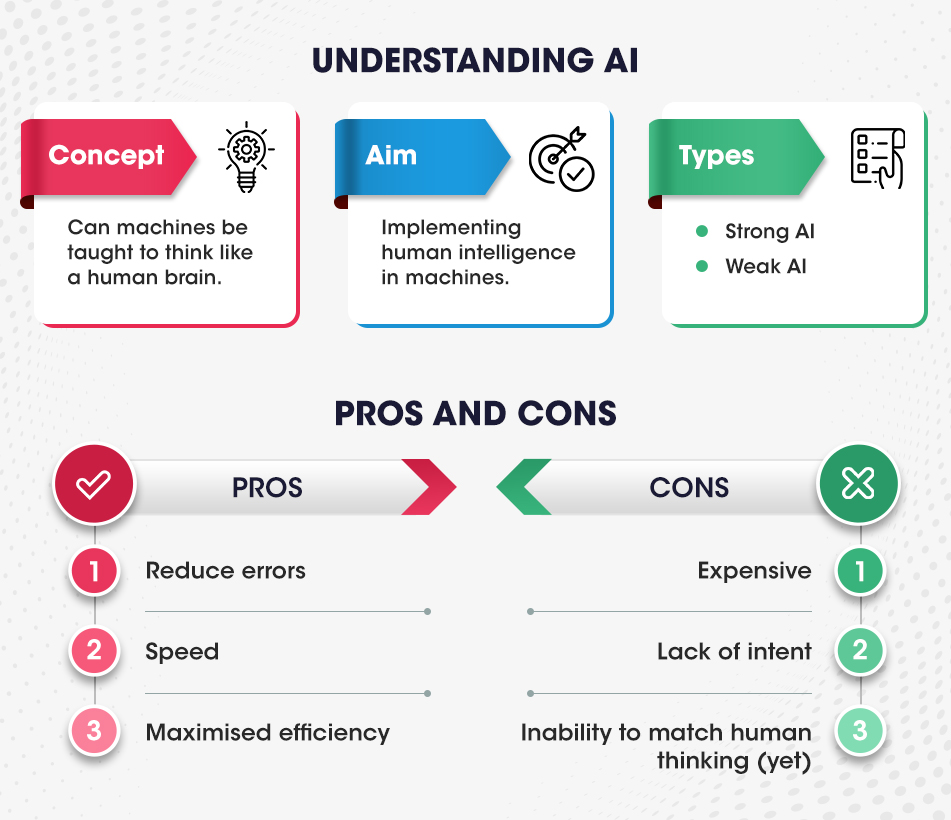
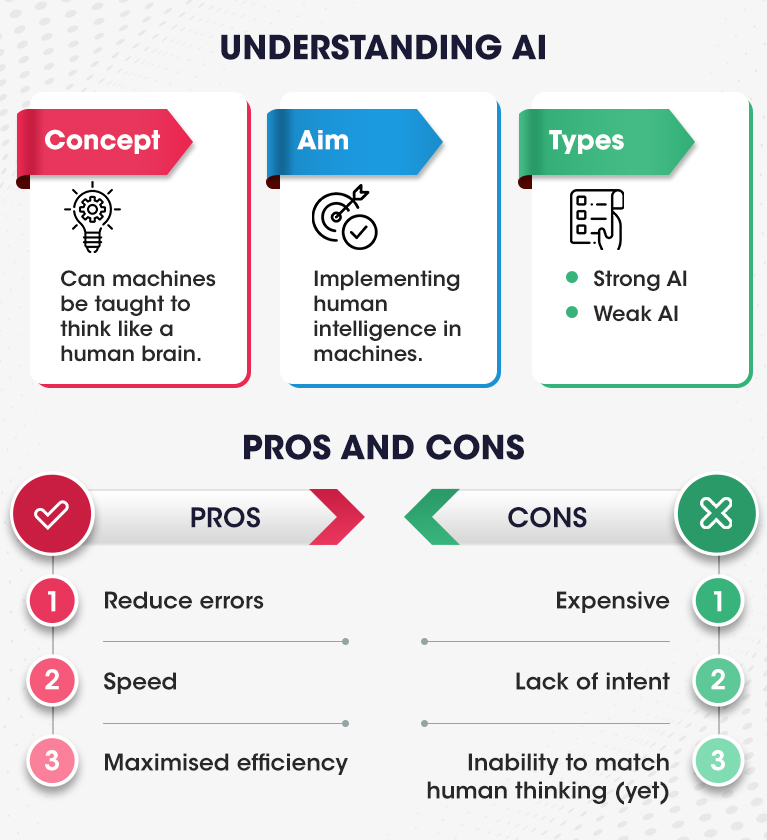
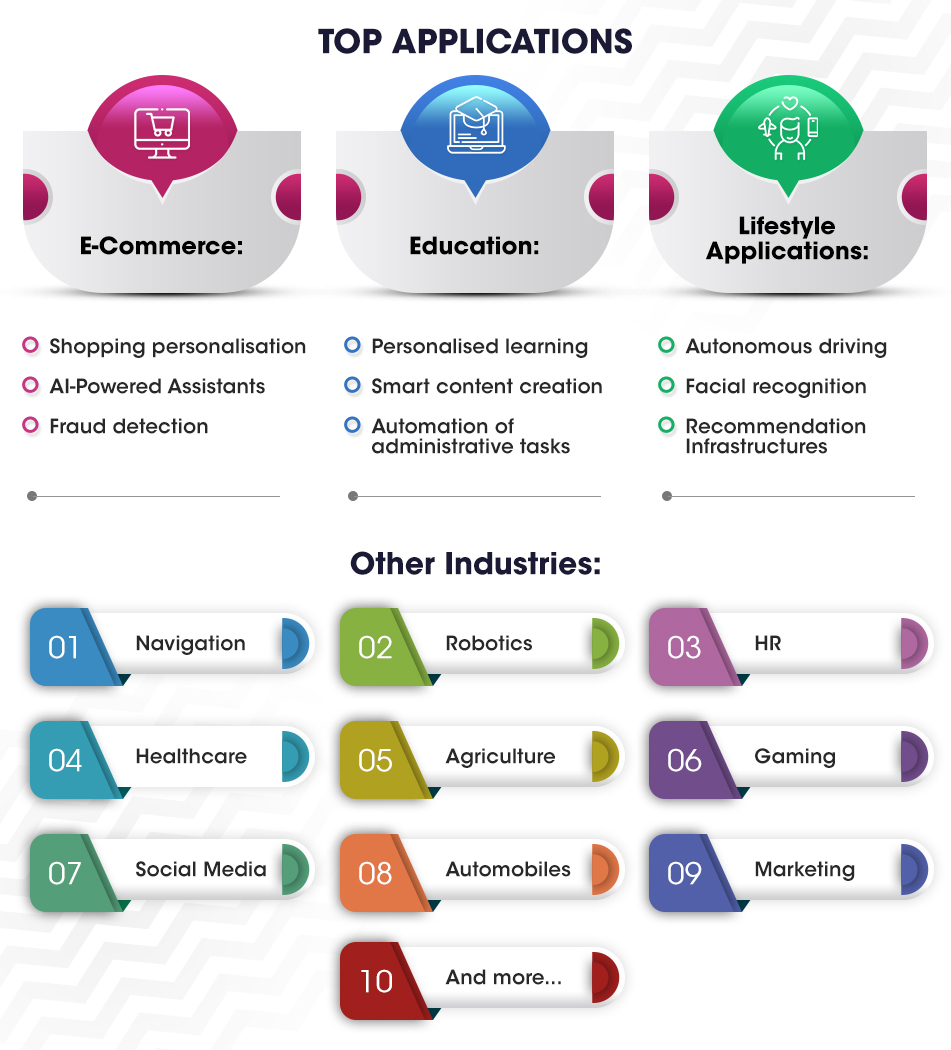
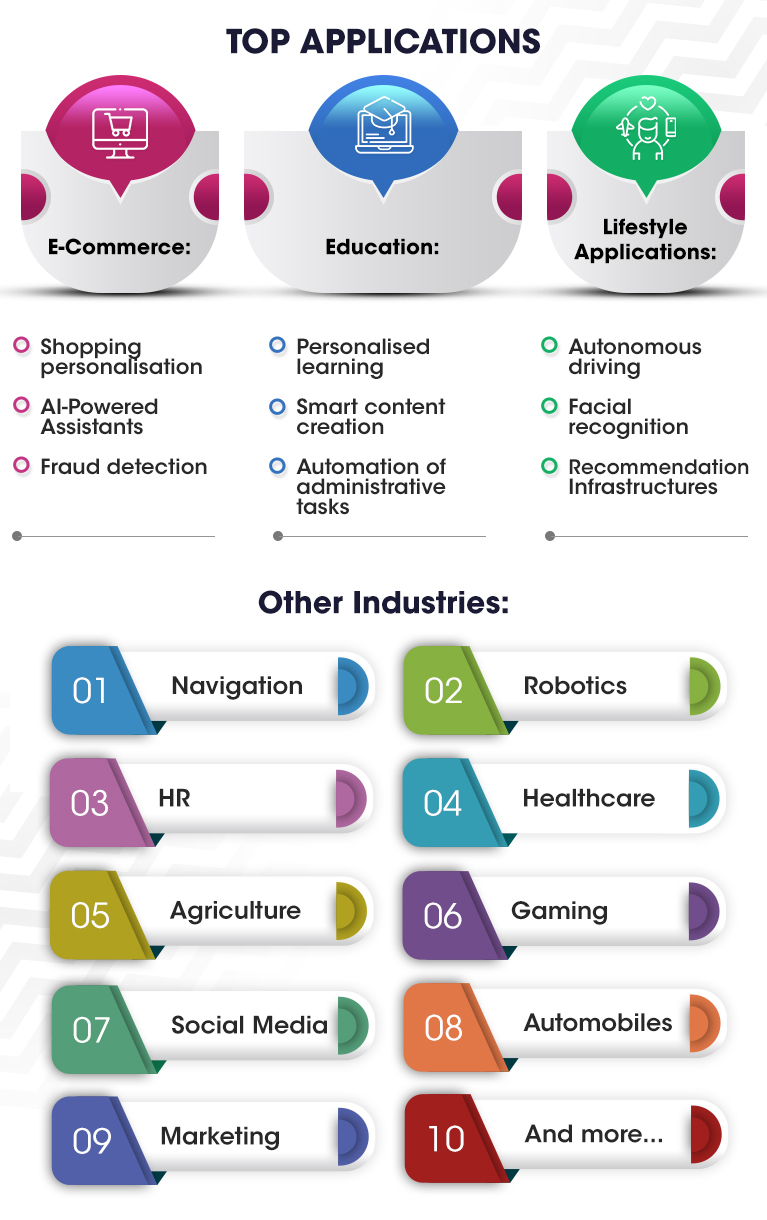
AI: Is it the Infinite Monkey Theorem Come to Life?
There is a theory that infinite monkeys sitting at infinite typewriters and hitting random keys, at one point or the other, will be able to churn out masterpieces like Tolstoy’s “War and Peace” or the entire works of Shakespeare. At that point, producing these masterpieces will be more about curation rather than creation.
Creativity is an aspect that has always been considered to be innately human. This is one of the reasons that make the infinite monkey theorem so compelling – because it is just so disturbing. A common topic of discussion, especially in literary circles, the concept of infinite monkeys has been an interesting notion. However, today, the amazing advances in AI seem to be turning it into a reality.
The Basics
All good AIs, and there are several in the market today, are designed in the way of neural networks, which act like the modules of the human brain, but they lack intent, motivation, and a sense of self. Just like a human would conduct some research, going through existing content and theories to come up with something new of their own, an AI writing tool is also trained before deployment using hordes of well-written data and content. Programmers also incorporate various codes and algorithms into these platforms, which empowers them to consider multiple matrices.
There are multiple algorithms working behind a single AI writing tool, allowing it to function almost like a human brain, understanding multiple aspects to deliver content that is precise and engaging. People have been training AI for ages now, whether they knew it or not – like all those Captchas you have been filling for Google to prove you’re not a robot.
The Introduction of AI-Writing Assistance
AI-writing is not a new concept. In fact, it was sometime during the 1970s when humans took their first step in this direction, with the introduction of the first spell-check. Today, spell-check, grammar check, autocorrect, etc. are so commonplace that a majority of people don’t even realize that they too are a form of AI writing tools.
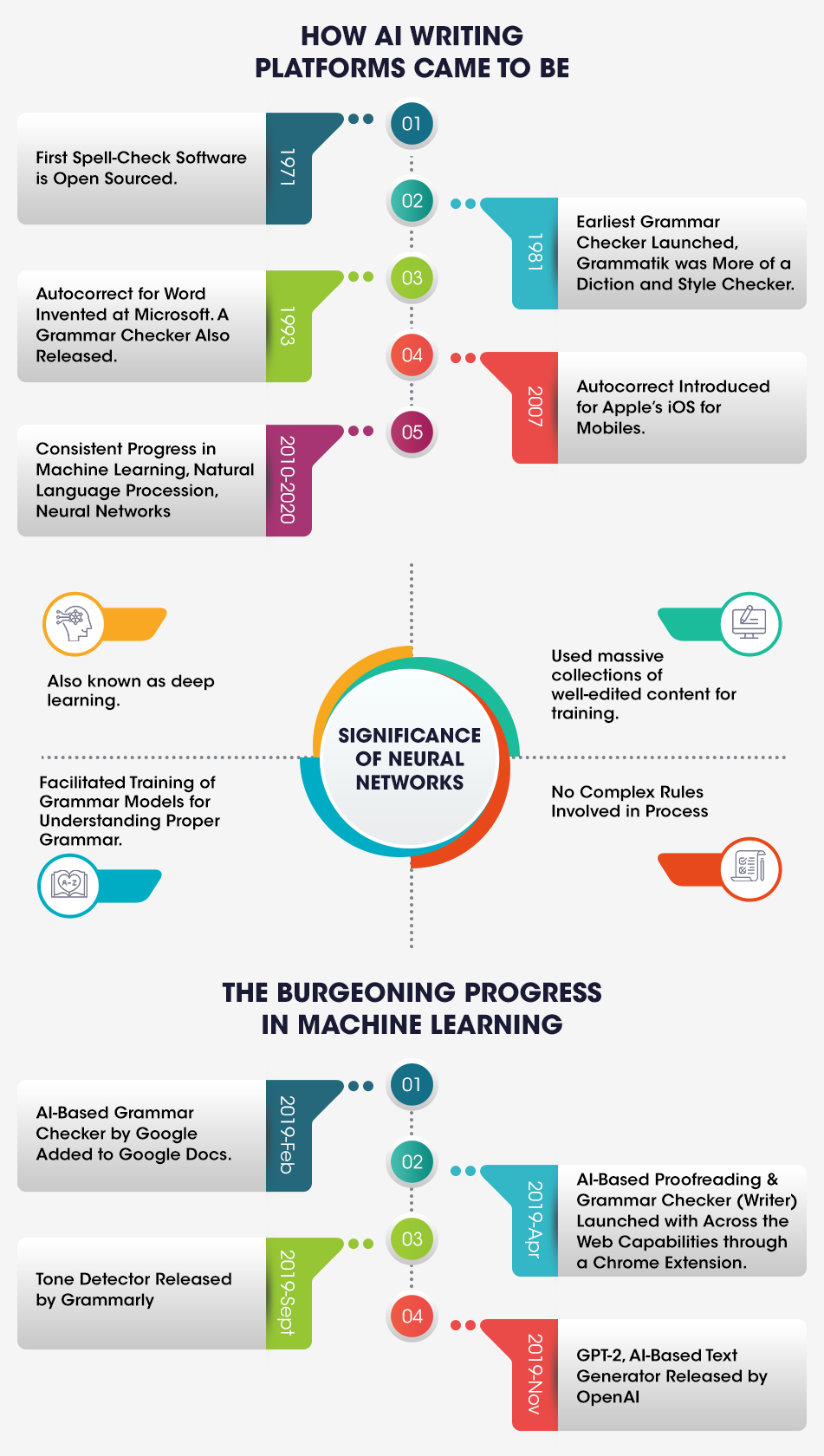
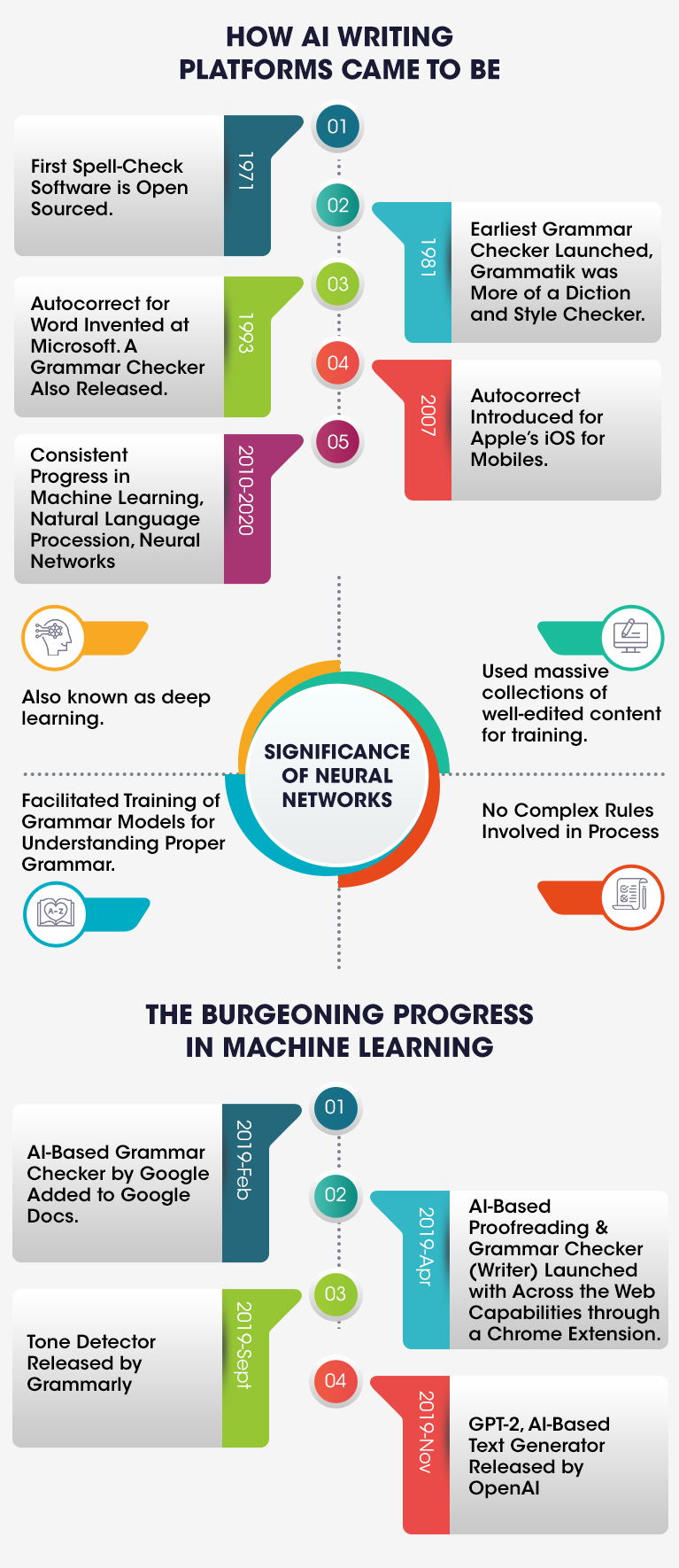
Understanding the Different Types of AI
AI can broadly be classified based on its functionalities or based on its capabilities.
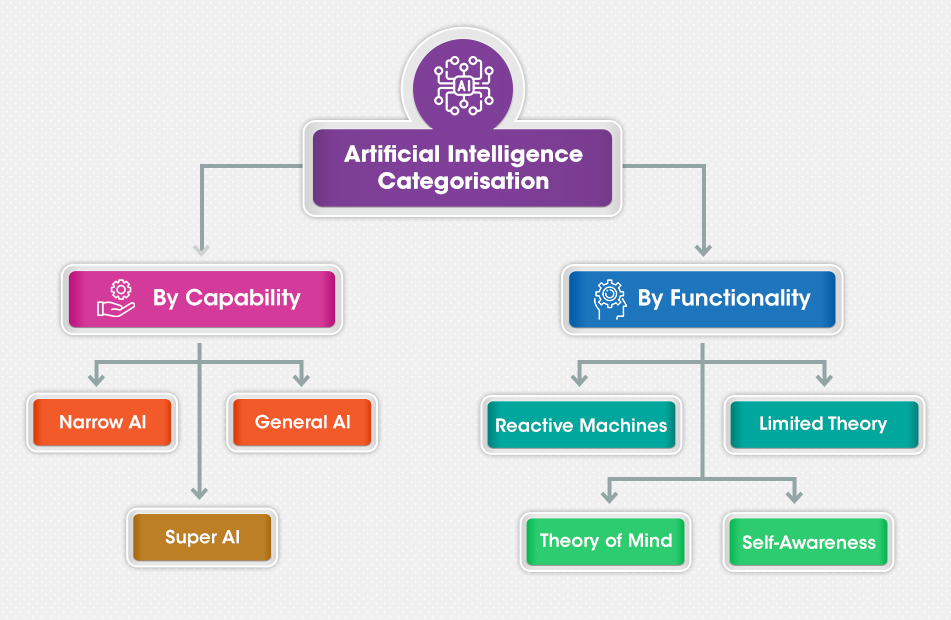
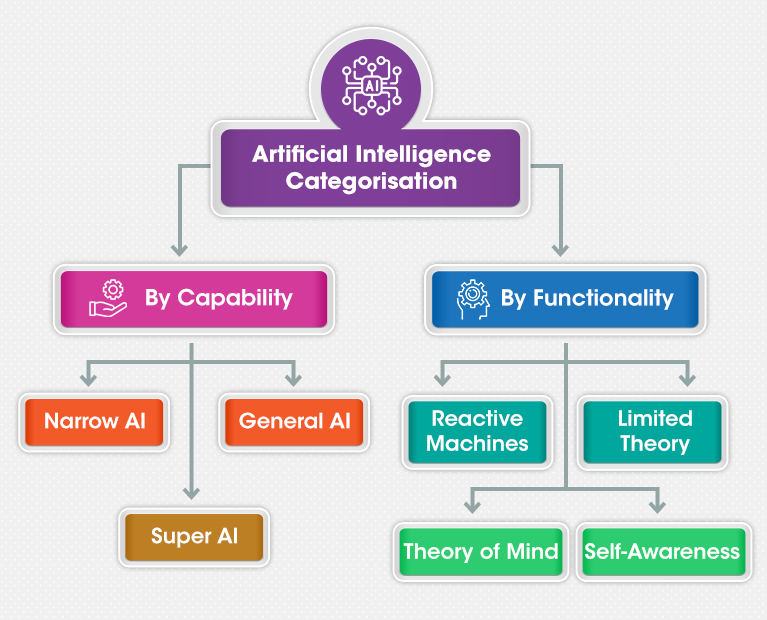
Capability-Based AI:
● Narrow AI (Weak AI): Focuses on a narrow task and is unable to perform tasks that are outside its purview. A single subset of cognitive abilities is targeted and that is the spectrum in which the AI advances. Examples include Siri, Google Translate, Recommendation Systems, SERPs, etc.
● General AI (Strong AI): Yet to be achieved, General AI requires the ability to program a full cognitive ability set that would help make machines conscious. Strong AI is able to understand and learn any intellectual task that humans can, and it allows machines to apply skills and knowledge in various contexts.
● Super AI: This is a concept that defines an AI that surpasses human intelligence. The AI will be so evolved that not only will it understand human sentiments and experiences, but it will also be able to evoke emotions, beliefs, desires, and needs within the AI. Its existence to date remains hypothetical.
Functionality-Based AI:
● Reactive Machines: These machines perceive the world and react to it in real time. This is a primary form of AI. It does not store memories or use past memories for future actions, they are given specific tasks to which their capabilities are limited.
● Limited Memory: This type of AI uses past data to train and make decisions, but the memory itself is rather short-lived. This is the kind of technology that powers self-driving cars and while it can use old data for a specific duration, it cannot be added to their database of experiences.
● Theory of Mind: Only existing as a concept as of yet, this represents an advanced type of AI that can understand the emotions, sentiments, and thoughts of people. It also needs to be able to understand that people and objects in an environment can alter behaviors and feelings.
● Self-Awareness: This type of AI is hypothetical. In concept, these AI systems will be able to understand their own conditions and traits and will be perceptive to human emotions. The AI will be smarter than humans, able to understand and evoke emotions, and will also have its own needs, emotions, and beliefs.
Capabilities of an AI Writing Tool
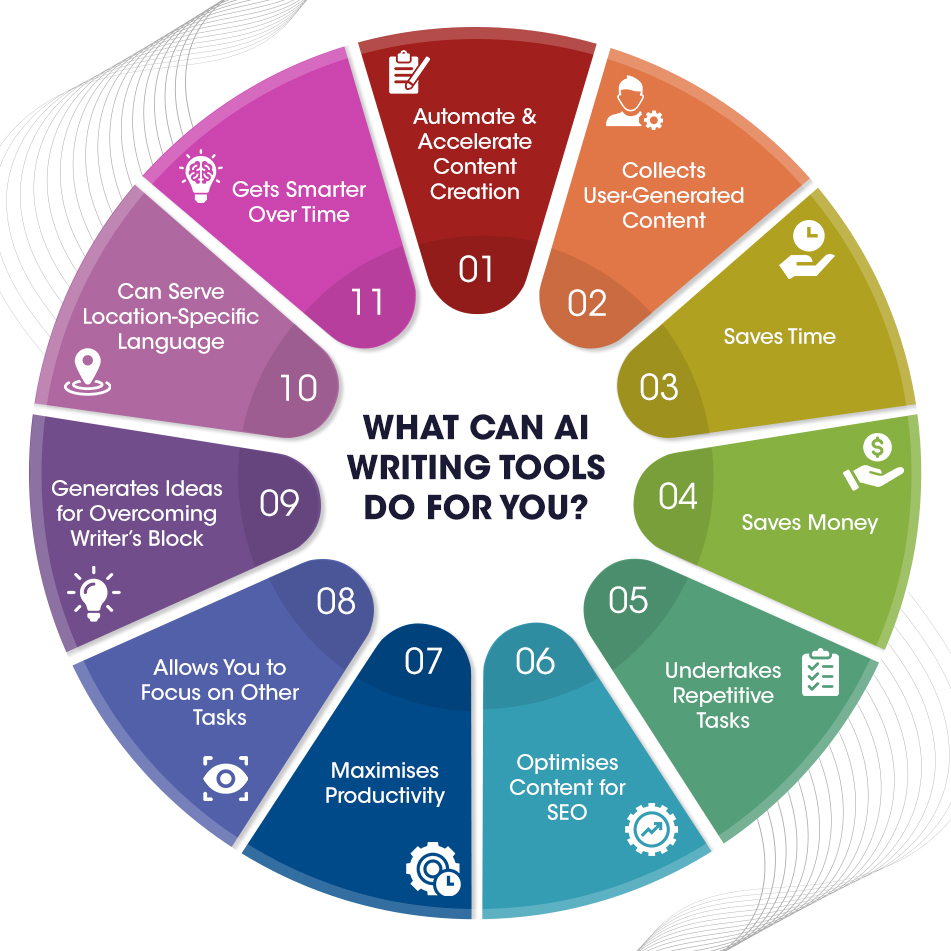
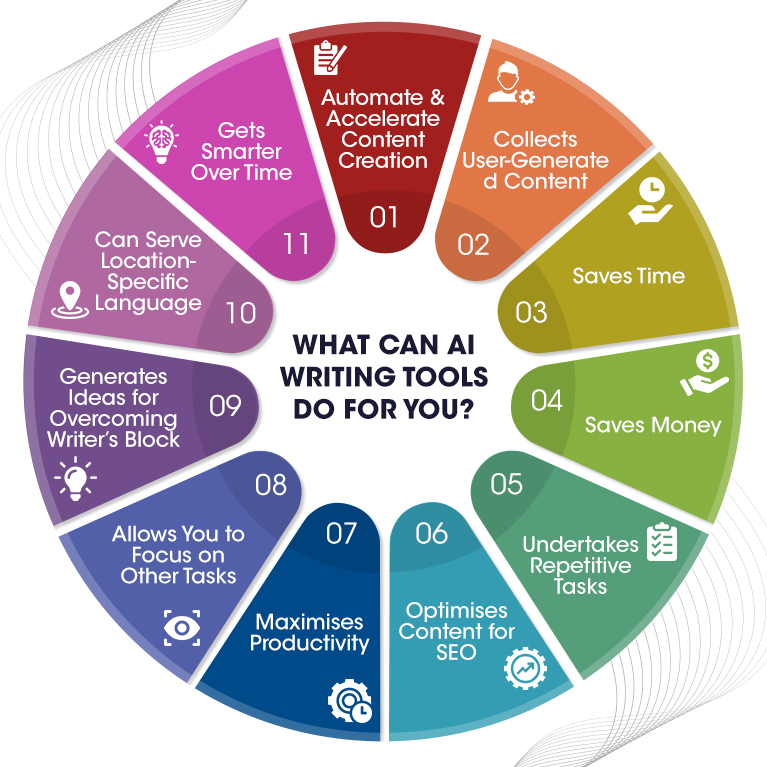
ChatGPT: Defining a New Era
The latest bot in the AI landscape, ChatGPT is one of the biggest reasons why writers today have started doubting the future of their careers. ChatGPT by OpenAI lets users type in questions in their normal language and answers in a conversational tone that may feel a bit stilted at times. It does however keep track of the thread of conversation, which it uses to form its next responses.
The chatbot is honestly quite impressive as you can ask it to write poems, make them more interesting, code a program, or ask for theories of Physics.
What’s the Catch?
ChatGPT, though giving some amazing answers, writing prompts, and write-ups, doesn’t really know anything itself. It is an AI that was trained to recognize patterns from vast collections of text from the internet, which, with further training by human assistance are used to create better dialogues.
As OpenAI warns its users, even if ChatGPT sounds very sure and provides an authoritative answer, it is very possible for it to be completely wrong.
Sometimes, the chatbot will tell you itself of its limitations. Sometimes it may tell you how it isn’t able to access external information beyond its training database, and in other instances, it may follow its own explanation with a disclaimer of how it cannot judge without more context and can only provide what is one possible interpretation.
Which Teams Can Benefit from AI-Writing Assistants
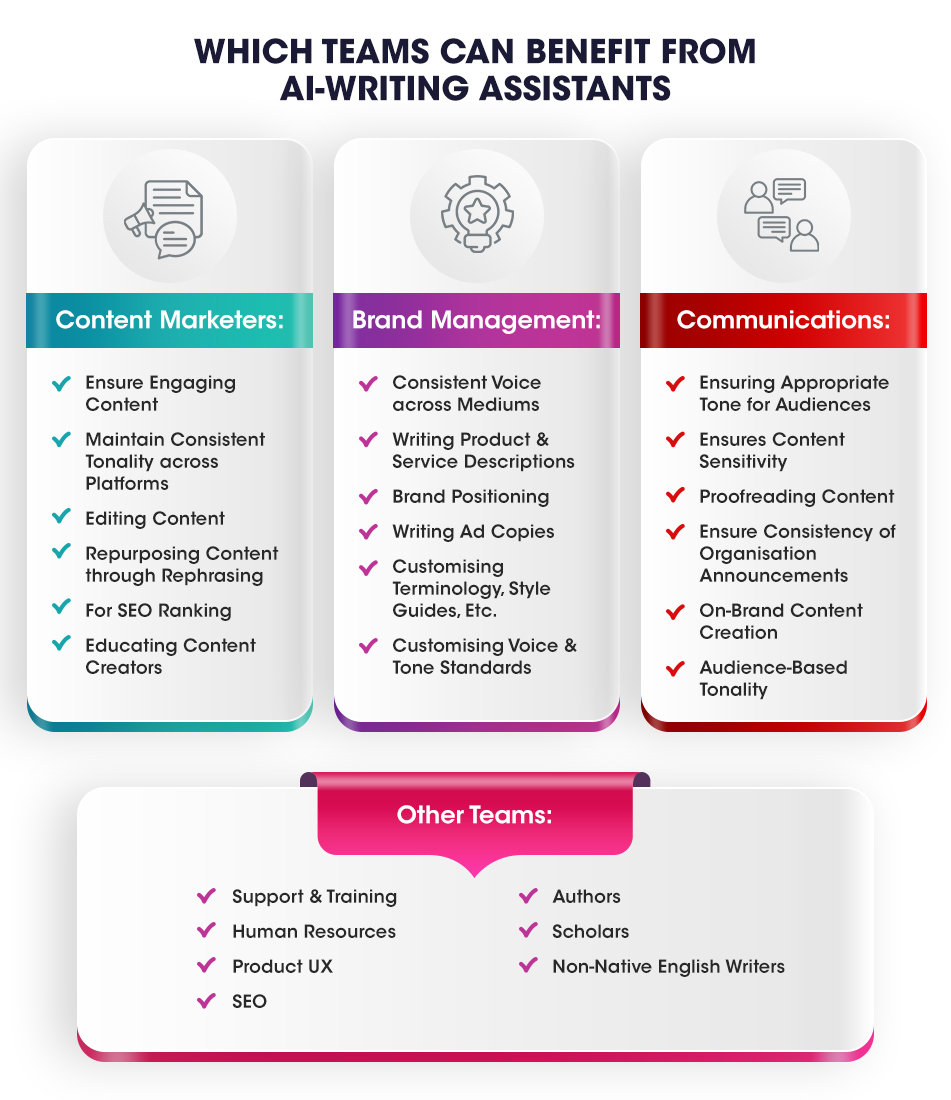
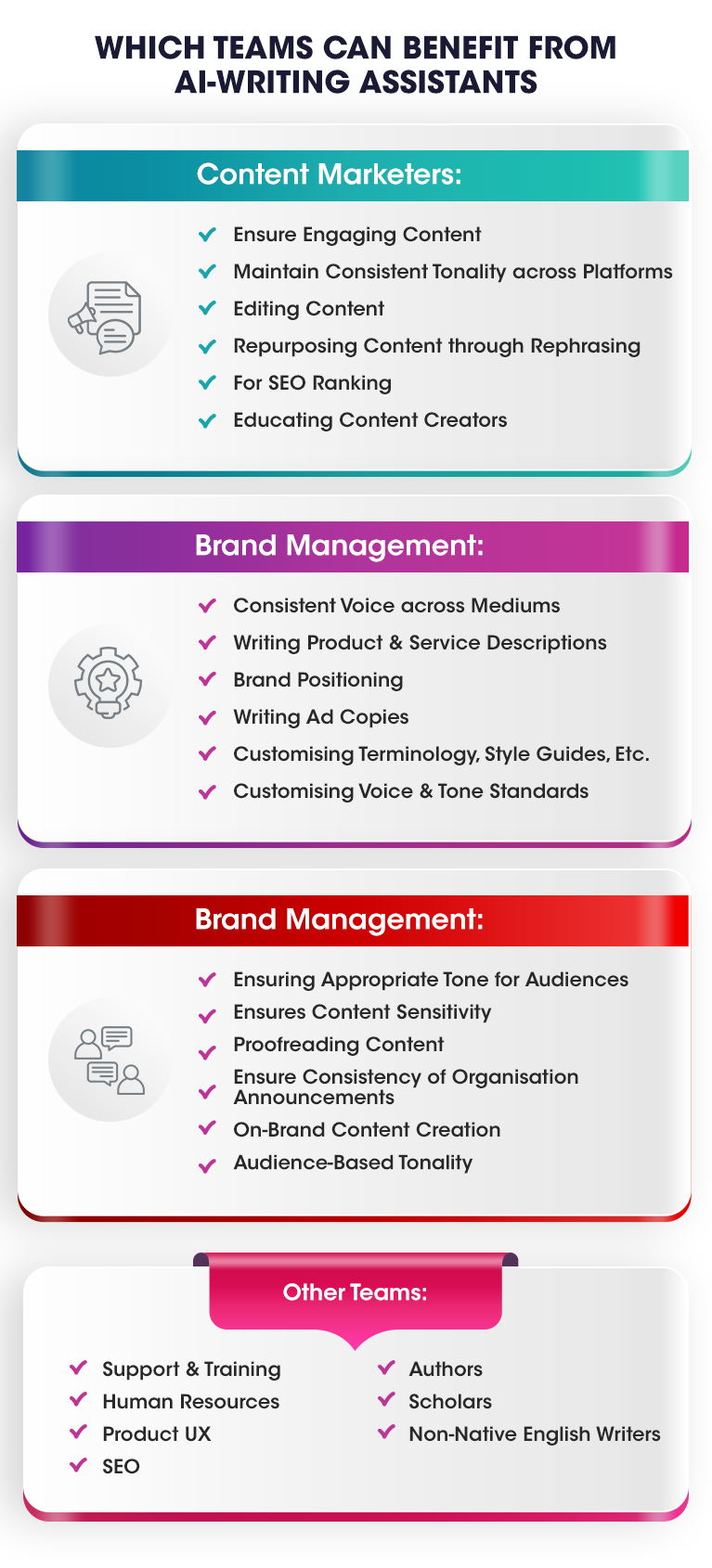
Use Cases for AI-Writing Assistants
Content
Including all kinds of content, from 300-400-word short blogs to 2000+-word case studies, content strategy encompasses a lot. It is also important to implement a consistent voice across the content that is being created, while also ensuring variations based on where it is to be posted. AI writing assistants can help you in producing higher quality content that helps improve SEO. It can help you make content interesting, easy to scan, ensure adherence to style guidelines, scale strategies, write inclusively, and repurpose content.
Marketing
Marketing copies for social media posts, landing pages, ad copies, product descriptions, etc. must be written in an objective tone that is maintained throughout a piece. The content’s word choice is also impacted by the fact that the content is supposed to inform, educate, and persuade. AI assistants can be used to improve consistency and clarity across content, share guidelines across teams, and in creating and using marketing templates.
Editorial
AI writing assistants with robust grammar checkers and advanced features for business writing can help enforce editorial guidelines across organizations, correct off-brand tonalities, configure writing style rules, save editing time involved, improve clarity, enhance readability and delivery, and train contributors.
The Verdict
It is a fact that AI is slated to get better and in the near future will be adept at technical writing, creating SEO copies, legal documents, etc. However, as the situation stands at present, the output provided by AI cannot really be counted as art. Some might argue that only conscious minds can birth meaning while others may attribute the consciousness of the observer as the one responsible for giving meaning to art
AI still needs a human editor to tether it to reality. But it’s a fine first-draft writer in short bursts, especially since it can generate paragraphs about 1000x faster than a human. You just click and there’s the text for you to pick and choose from.
Overall, everything delivered by AI that has been labeled as astounding has so far been about transmitting information derived from existing patterns, but they have not yet been able to create unique, interesting content.
In theory, the future is not far where AI writing tools will be doing everything a human copywriter or content strategist does, but practically, there’s still a long way to go. It will be longer still by the time AI develops to a point where it does not require human intervention or supervision.
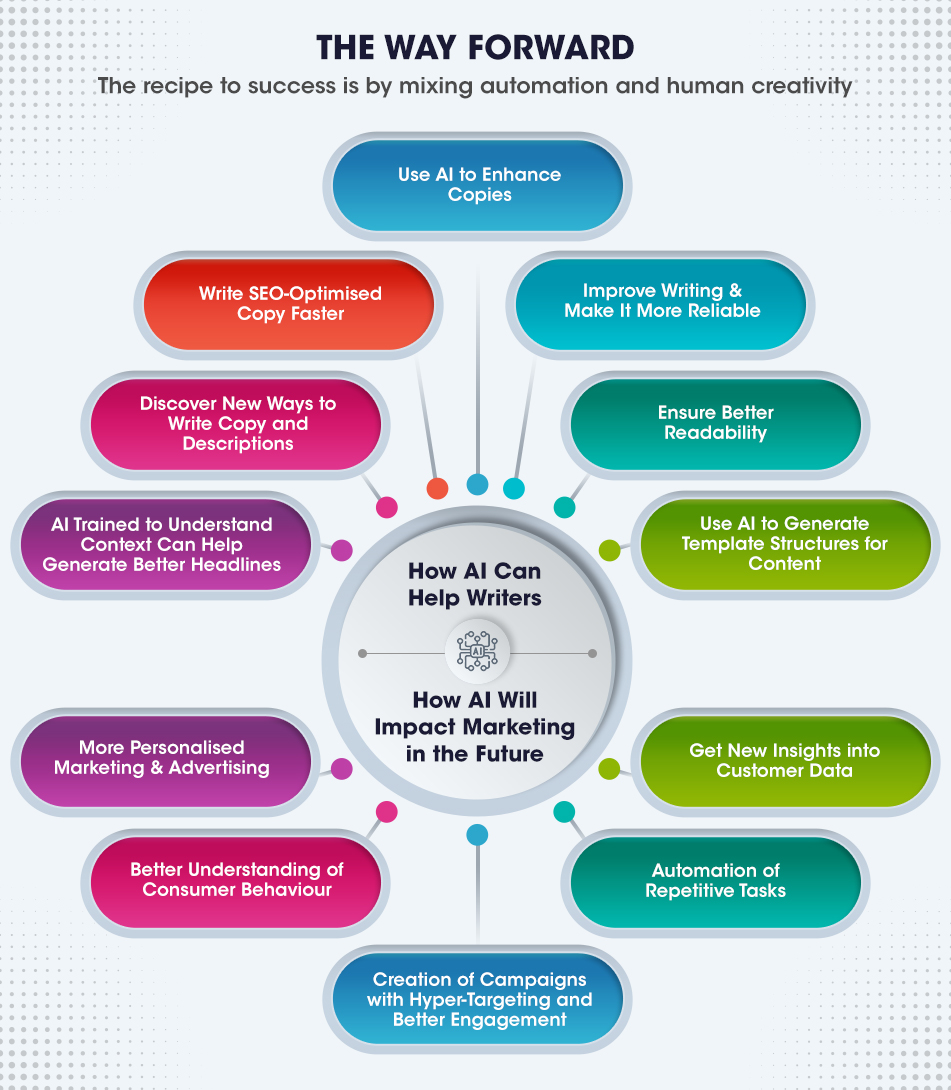
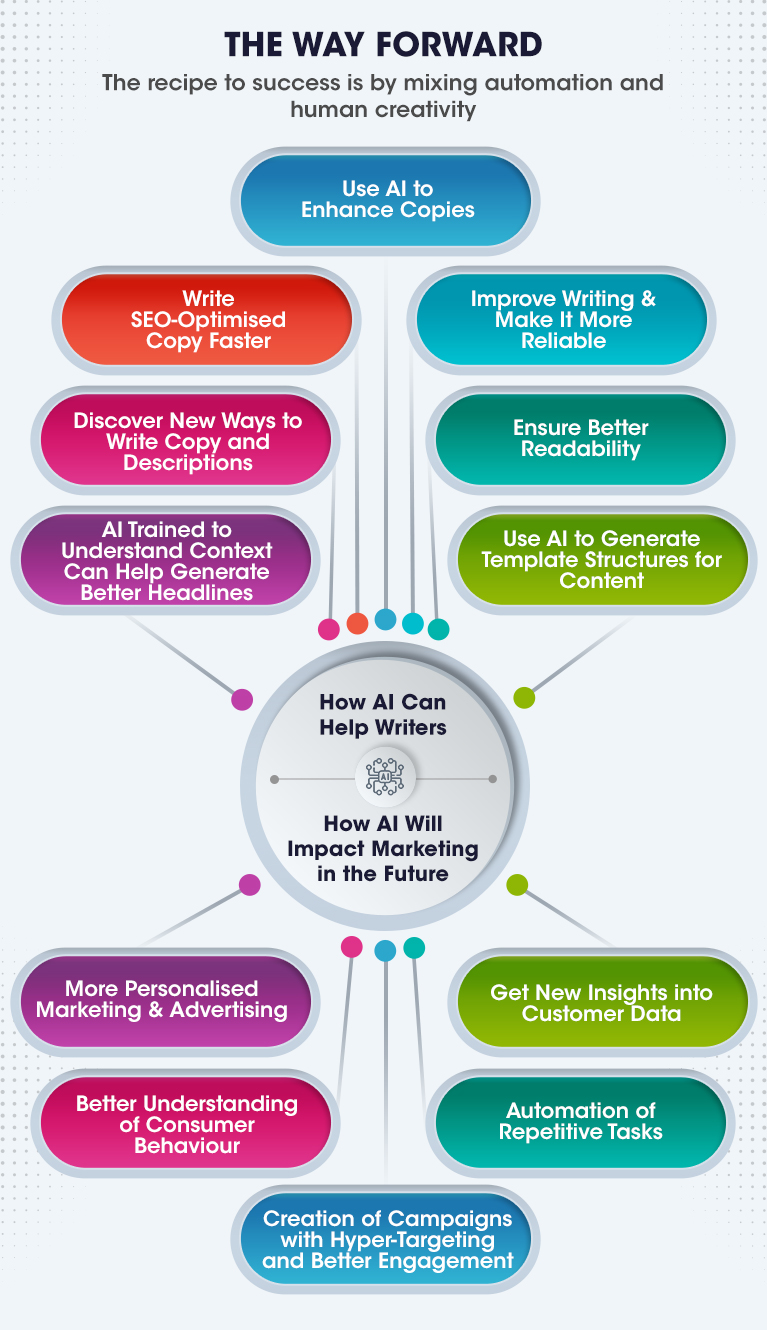
Whether it is to oversee the production value provided by AI or to lend their own creative voice to the processes, creatives who leverage AI-writing tools to push their own creativity are the ones who are going to make it to the other side of this transformation. The time to accept AI was yesterday, as today, the creative needs to implement these tools to fuel their own content.
Over 18 years of work experience working in the marketing and advertising industry. Building design solutions for Telecom, FMCG, Footwear, Consumer Durable, and other categories that help to deliver the brand stories to ignite relevant consumer actions. Skilled in relevant design tools, he has helped create brand story extensions into all mediums – from TV to Print to Visual Merchandize to OOH/Direct Marketing and Digital Marketing for some of the leading brands like Aircel, Panasonic, Relaxo (Sparx, Flite, Bahamas), Nikon, Suzuki Motorcycle, English Oven, Cremica, Paras Ghee, Luminous, Livpure, DLF, etc






Leave a Comment